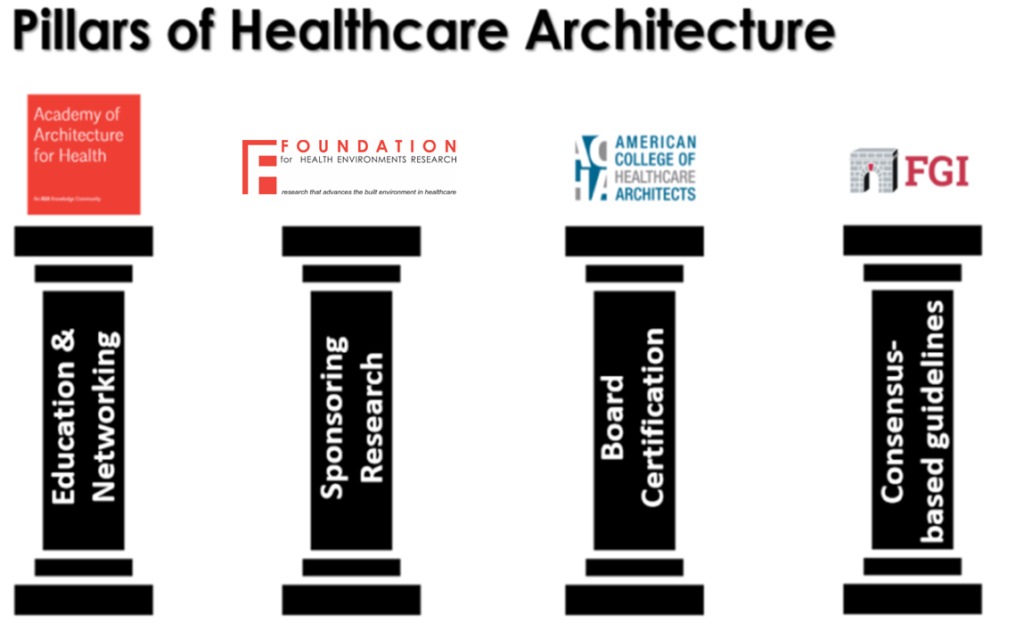An Ongoing Collaborative Alliance – The 4 Pillars
The four organizations below are allied to advance healthcare architecture, and have become known as The 4 Pillars. Each organization’s leaders have committed to search out collaboration where it is beneficial and to improve our collective efficiency by clarifying the roles of each and avoiding duplication of services. The AIA Academy of Architecture for Health (AAH) was created in 1946, and each of the other three organizations initially were created by members of AAH to advance specific aspects of the profession. Each remain fully independent, but meet regularly to continue to enrich this important alliance. We urge you to visit each organization’s website, to learn more.

AIA AAH
The AIA Academy of Architecture for Health
Education and Networking
The AIA Academy of Architecture for Health provides knowledge which supports the design of healthy environments by creating education and networking opportunities for members of – and those touched by – the healthcare architectural profession. It is one of the most active of the 21 AIA Knowledge Communities.
ACHA
The American College of Healthcare Architects
Board Certification
The American College of Healthcare Architects was created in 1999 to offer Board Certification to licensed healthcare Architects through an independent process involving a portfolio review, an assessment by peer Architects, and a rigorous examination. It is the first and only design specialty so recognized by the AIA.
FHER
Foundation for Health Environments Research
(formerly AAHF)
Research Sponsorship
The mission of the Foundation is to support the AIA Academy of Architecture for Health and to enhance the knowledge and effectiveness of those who create healthcare environments through the funding of critical educational and research activities
FGI
Facility Guidelines Institute
Standards Development
The mission of FGI is to establish and promote consensus-based guidelines and publications, advised by research, to advance quality health care. FGI is responsible for the process and the 110+ person multidisciplinary committee responsible for developing and publishing the Guidelines.
Our work is forged in powerful collaboration with the following professional organizations:

Support the work of the College through event and partner sponsorships.





